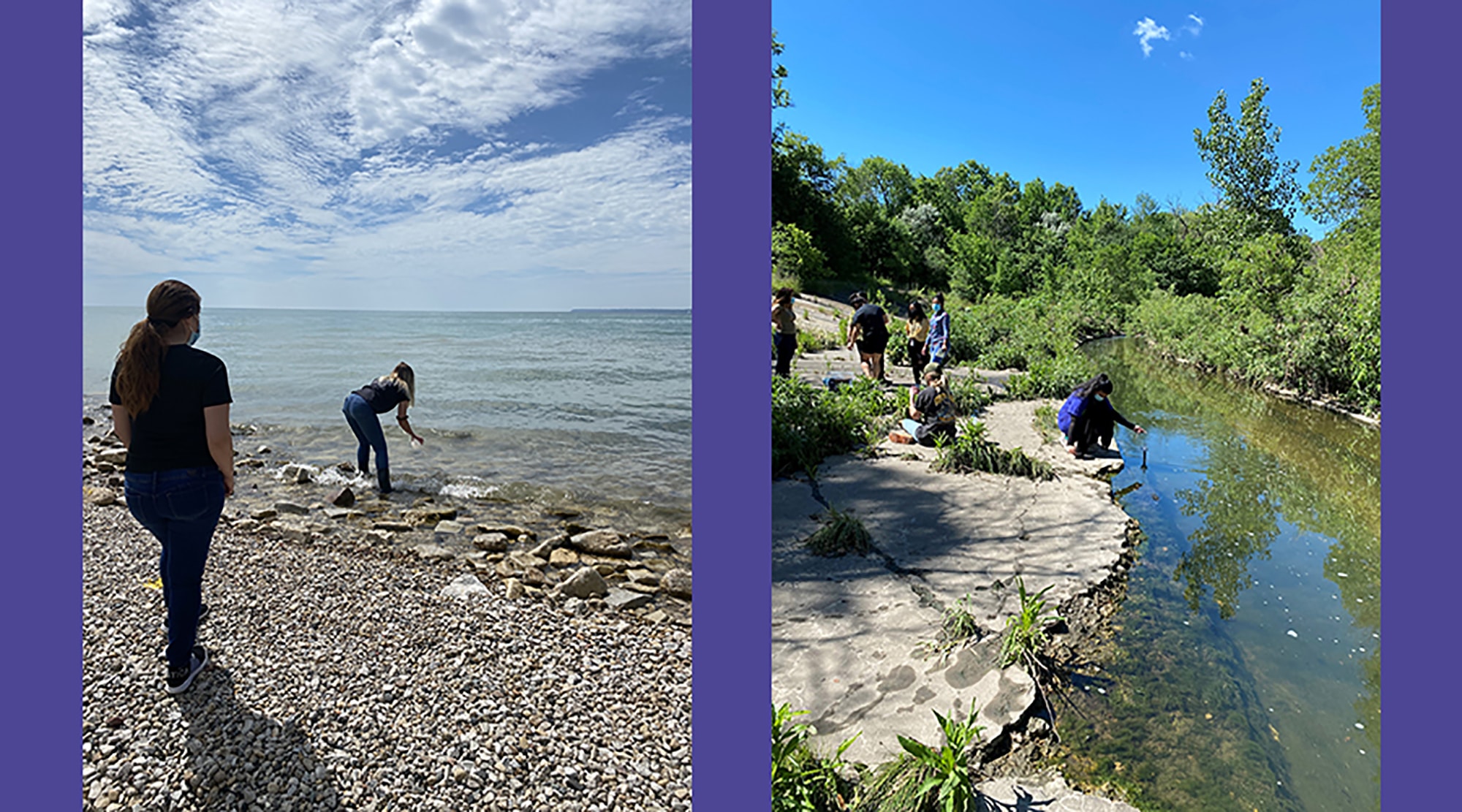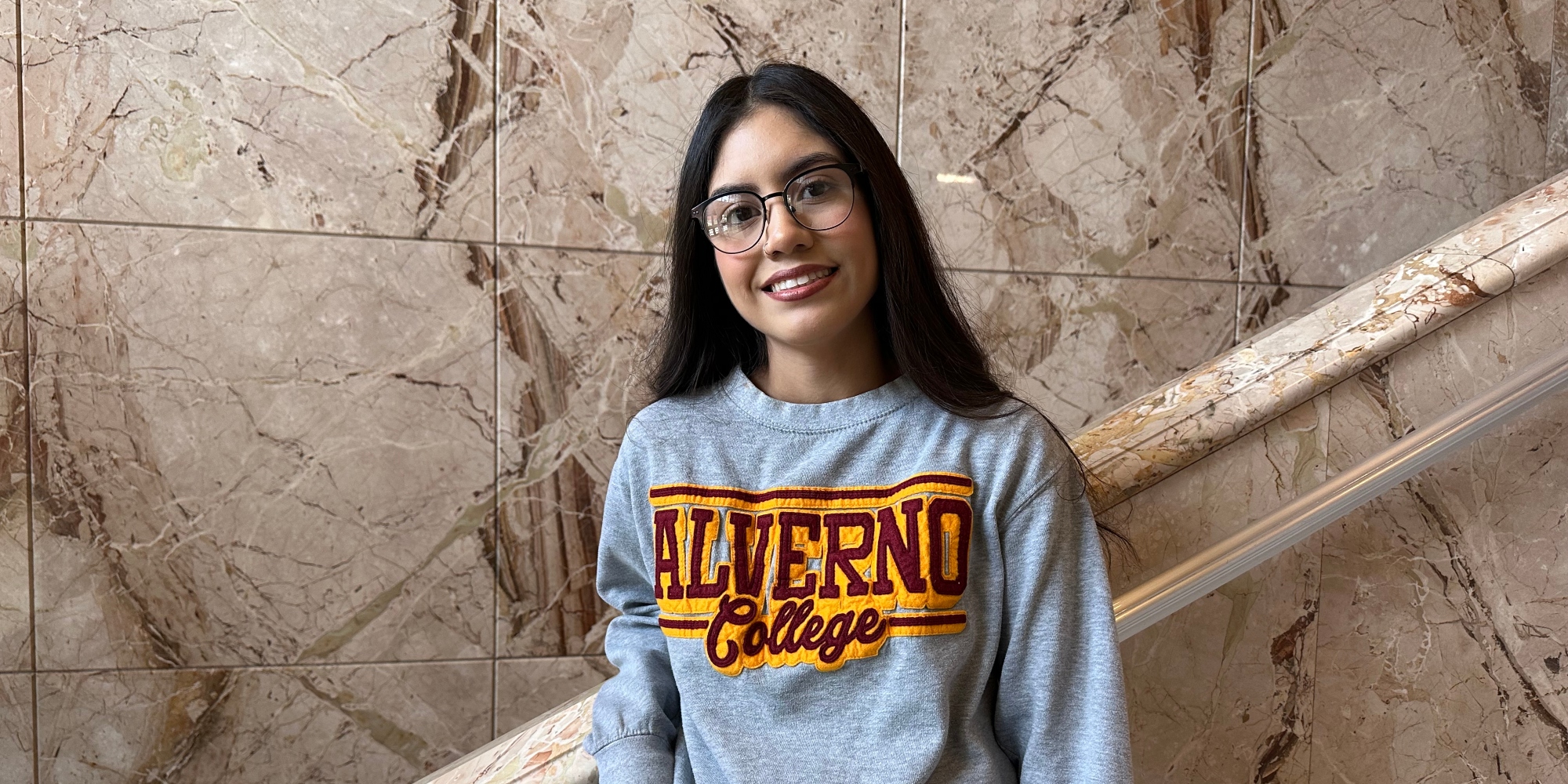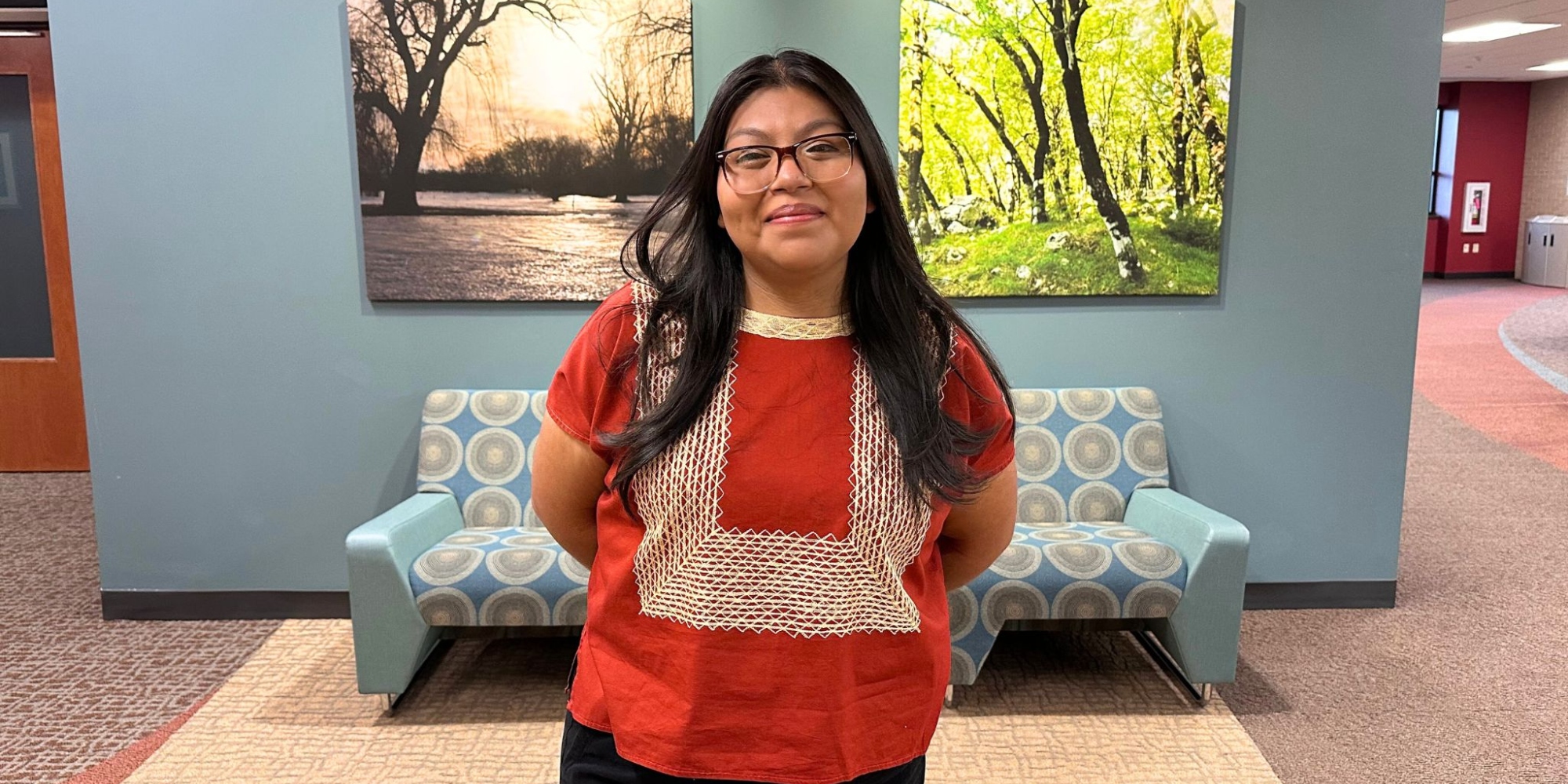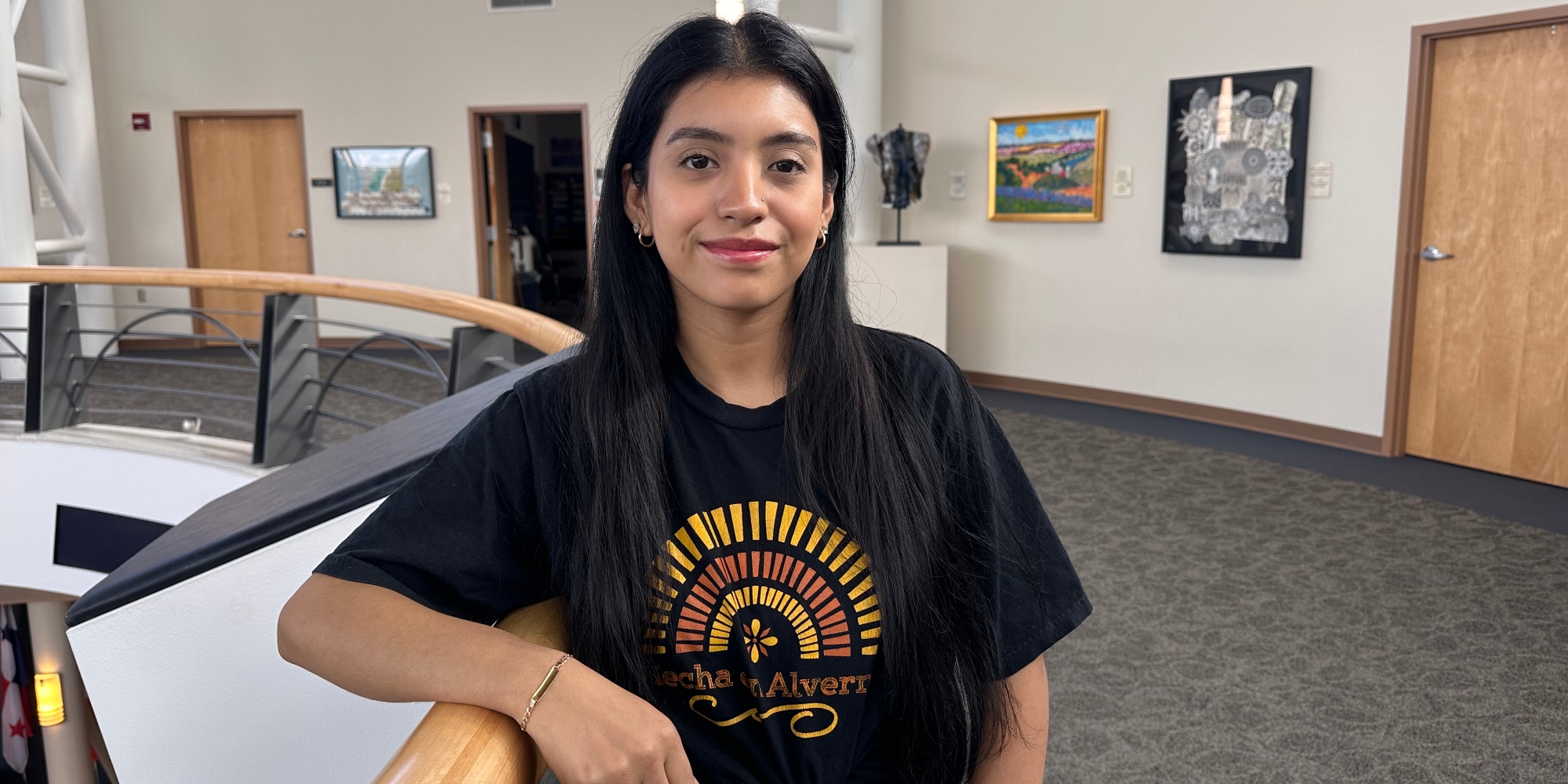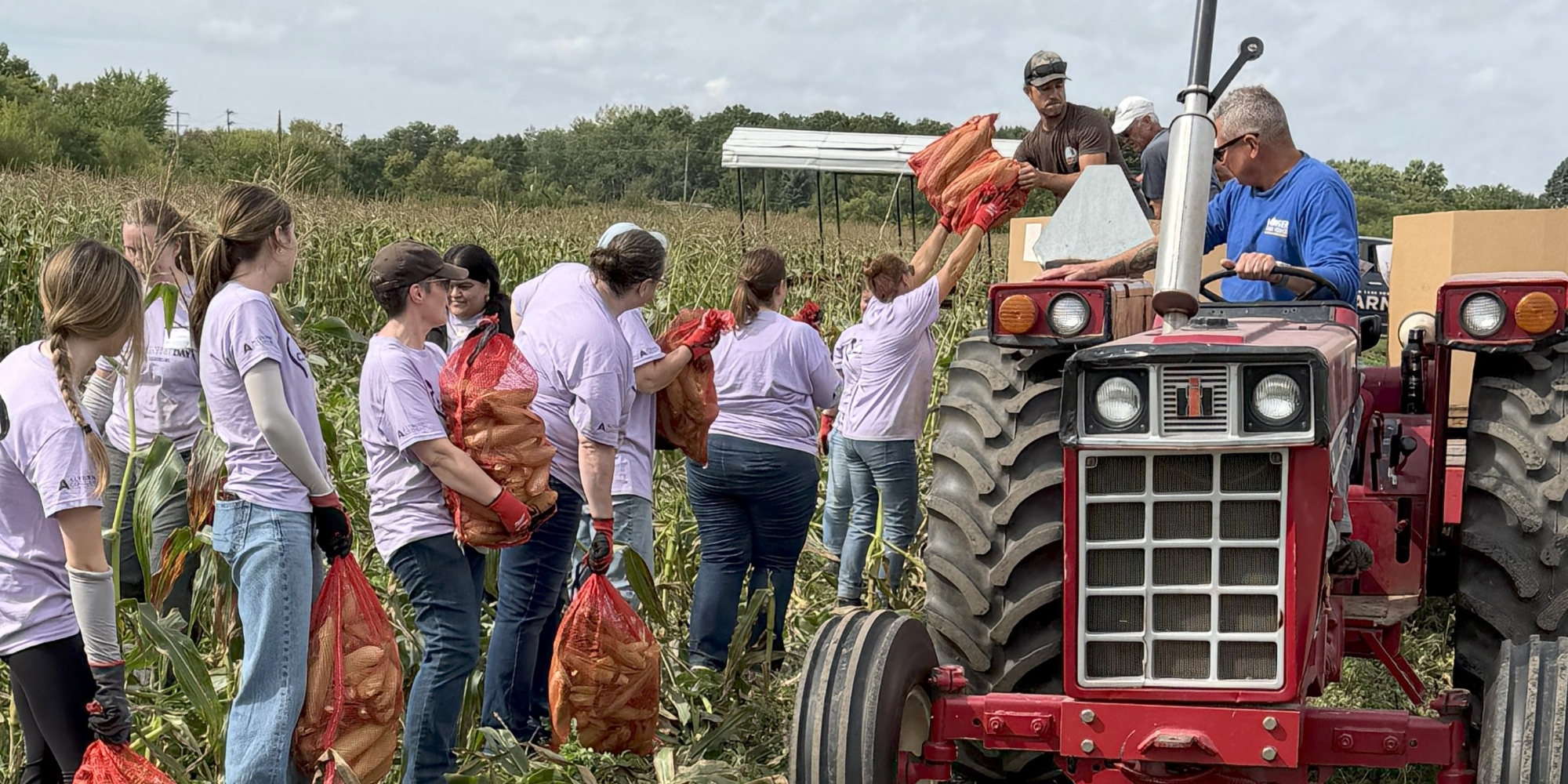Alex Blom held the door as the delivery men hauled the refrigerator-sized machine — a spectrometer donated by Aurora West Allis Memorial Hospital — into the lab. On that January day, Blom, an associate physical sciences professor, had been waiting almost a year for the instrument, which can detect chemical constituents in liquids. The goal was to have it ready for faculty-student summer research, where it would shave hours from the time it took to prep and analyze water samples. “We were really looking forward to using it,” says Blom. “And then the lockdown happened.”
Not only did the COVID-19 pandemic require Alverno to pivot to remote learning for the spring semester, it also threatened to disrupt the college’s summer research program. Launched in 2018 with a grant from the Wisconsin Louis Stokes Alliance for Minority Participation (WiscAMP), and supported by subsequent grants and scholarships, the program keeps STEM students connected to their studies and builds confidence. How Alverno faculty adapted the summer research program to the online environment speaks to the resiliency of the campus community and its steadfast dedication to academic excellence.
Down’s upside
Summer meant Houston for Alverno senior Patricia Zamora. She’d been accepted into a research internship with the University of Texas and planned to scout out their PhD programs. But when COVID-19 hit, the internship was cancelled. A similar thing happened to senior Syeda Fatima Zehra. The students, both biomedical sciences majors, asked Blom if they could join Alverno’s summer research partnership with a community-based organization to measure the presence of lead levels in river and lake water.
Blom turned to biology professor and STEM chair Angela Frey, who rounded up extra funding for stipends and supplies from WiscAMP, Alverno’s Center for Academic Excellence and Alverno’s NSF New Futures S-STEM grant. “We did our best to not turn anybody away,” says Blom.
Zamora had participated in the research program’s inaugural summer in 2018 and again in 2019. With a third summer before her, she found her stride. When Blom asked the students for their thoughts on how to expand the impact of the research, Zamora suggested increasing the number of sampling sites to include more sections of the Kinnickinnic River and Lake Michigan. Blom agreed. It would give them a larger picture of possible contamination, and spending more time outside would make it easier to social distance and reduce the odds of transmission.
With her know-how, Zamora stepped into a leadership role. She coached her peers on water collection protocols, sample preparations in the laboratory and data processing. By the end of July, the research results showed that although the lake and river waters contained lead, the quantities were, on average, much lower than the previous year — 0.5 parts per million (ppm) this summer compared with last year’s 2 ppm.
For Zamora, the program turned a missed opportunity into a rewarding experience. She enjoyed training her classmates on field and lab techniques and found it rewarding to watch them learn. But that’s not all. “It made me see what I actually want to do for my career,” she says. She’d been thinking about becoming a physician’s assistant but is now exploring a health and medical research path.
“It helped me understand what research is and how it can help serve a community,” she says.
Sidestepping
In all fields of scientific research, from anthropology to zoology, scientists are gathering massive amounts of data that need to be interpreted. Math-based analytics tools, including spreadsheets like Excel, are critical components of research. But science students don’t always make connections between math and science as they complete courses in separate disciplines, says assistant professor of biology Rebekah Klingler. “My math classes did not prepare me for what I needed to know as a researcher. They didn’t give me the vocabulary for how to talk to mathematicians and statisticians,” she says.
Klingler and mathematics professor Susan Pustejovsky aimed to bridge this divide through paid summer campus internships. Interns would practice searching for published data and combining it with new analysis gleaned from water samples collected in the field. But COVID-19 disrupted their agenda. Quickly, they pivoted to focus solely on literature research and data analysis.
“In some respects, we lucked out. We had already planned to have a tech-heavy internship experience,” says Klingler.
Klingler and Pustejovsky asked the students to imagine that they’d started a new job or were in graduate school and had been given a scientific problem around water quality to research. Where would they begin? The answer: Publicly available data repositories managed by federal and state agencies such as the Wisconsin Department of Natural Resources or the Environmental Protection Agency. Students had to download the data, clean it up and import it into Excel, where they could interpret the information to create visuals, such as charts and graphs.
“From a data analysis point of view, it’s not completely straightforward to actually get the data you want, to put it into Excel, or some other program, in order to understand it — those are valuable skills,” says Pustejovsky.
A diverse collection of projects emerged. One student compared the data that described land use — whether agricultural, industrial or residential — surrounding Lake Geneva and compared it to E. coli test results for different beaches. Another student looked at the presence of antibiotic-resistant bacteria in hospital sinks and drains. Others looked at research around chemical contaminants in water, the impact of invasive species and variations in drinking water standards across different bodies of water. All 10 students prepared Powerpoint slides of their results and presented their findings by sharing their screens in the remote-learning environment. When safe to do so, they look forward to meeting in person to share the posters they created for their individual projects.
Blom is also anticipating a return to campus and the opportunity to use the new spectrometer. It still needs to be set up and he needs training, but he has a plan for that. “We’re using this as a project this fall. My instrumental analysis students will be working to get it running.”
This summer, 18 Alverno students were able to participate in STEM research thanks to the new Mary Ellen Powers Research Fellowship Program. Learn more here.

